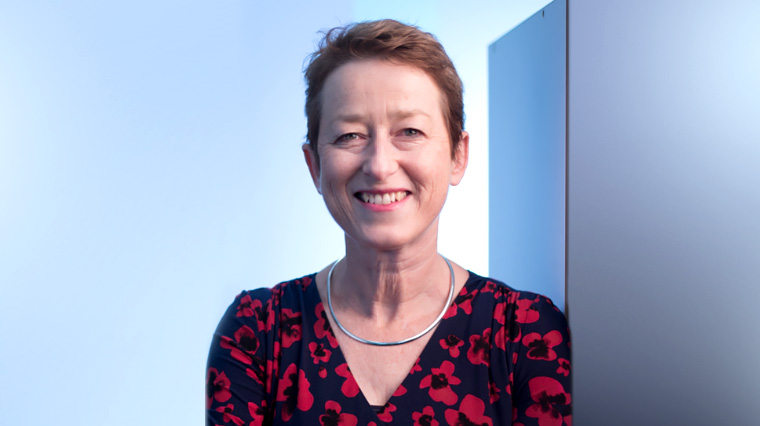News
What does a resilient community look like?
The decision to stay or leave a community in the aftermath of bushfire can play a vital role in a person’s road to recovery.
 People in bushfire-affected communities often feel a link between regrowth of the bush and their own recovery. (Image: AAP)
People in bushfire-affected communities often feel a link between regrowth of the bush and their own recovery. (Image: AAP)
‘The homesickness you have when you are still at home.’
Solastalgia has been described as the wider sense of loss felt when one’s home environment is damaged or degraded – a concept not unfamiliar to people who live in bushfire-affected areas.
Professor Lisa Gibbs, Director of the Child and Community Wellbeing Unit at the University of Melbourne School of Population and Global Health, led a research project that traced people’s experiences as part of bushfire-affected communities.
The project identified that community support groups and building social connections are fundamental in the long journey of rebuilding lives and communities, helping to reduce the personal and psychological impacts of a disaster.
‘[Social connections] are part of the fabric of the community,’ Professor Gibbs told newsGP.
‘They don’t have to be focused on disaster recovery. There’s something about coming together, the connections that are formed, the opportunity to share information and to look out for each other, which are really important aspects of the experience.’
The Beyond Bushfire study tracked the resilience and recovery of communities following Victoria’s 2009 Black Saturday bushfires and, according to Professor Gibbs, the same social ties apply to helping those affected by this summer’s bushfires.
‘One of the things we asked originally in the Beyond Bushfire study was, “Do you belong to a local community group?”, and it just came out as a really strong predictor of better outcomes,’ Professor Gibbs said.
‘So we knew there was a really important factor. We anticipated that there’d be social influences on social health and wellbeing – that just stands to reason that we wanted to understand it more.’
For people who belonged to more than one social group – the local footy club, service club, Men’s Shed, art group, walking group, etc – additional benefits such as new friendships were evident.
However, Professor Gibbs also noted that those benefits start to decrease when a person has responsibilities in multiple groups.
‘The message from that is that you want people to share the load a bit, so be mindful of the need for others to take on responsibilities, but also to be aware that where there are people who have these multiple roles, to make sure they’re getting support because if they can do what they do, then there is widespread benefits,’ she said.
Having more close connections is protective, Professor Gibbs says, and being part of a community where lots of people belong to local groups can extend those benefits to others.
‘We think that’s because there’s an increased trust and reciprocity in that local area that’s generating from the fact that so many people are interconnected,’ she said.
‘So it starts to tell us what a resilient community looks like.’

Professor Lisa Gibbs visited communities affected by the devastating 2009 Black Saturday bushfires to gain an insight into building resilience.
For some, however, choosing to remain in the affected community is just too difficult.
The study explored the decision-making process of whether people stayed or moved somewhere else to start again, then compared the wellbeing profiles four years later.
‘For the people who stayed, that connection to community was really strong and supportive of their wellbeing,’ Professor Gibbs said. ‘There’s kind of a shared processing of what’s happened that goes on in the years afterwards.
‘Whereas those who move away, they move away from all of the disruption, the blackness, the difficulties of rebuilding, but they also lose that opportunity for the shared experience of it.
‘So some of them are still affected by the original trauma of the fire, but they have the benefit of less disruptions and being in a different scenario.’
Part of the follow-up four years after the fires involved community visits. Professor Gibbs observed the profoundness of some people feeling a link between the regrowth of the bush and their own recovery when asked, ‘What’s important to you in your life now, and can you show us?’
‘We were invited to have a walk and talk and some people showed us around their house, their property, the local area ... to take pictures and look at different aspects,’ she said.
‘People showed us the trees, the landscape – it was the natural environment that was really important to them.
‘That came up again and again and we realised that we needed to acknowledge and capture this. So we analysed those against mental health and resilience, and found that for people who felt connected to the natural environment, they fared better on every outcome we looked at.’
A fascination with the bush’s capacity to recover and drawing parallels with their own scarring and recovery also helped with the healing process.
‘Many people told us that the reason they came to that particular area or property was because they were drawn to the beauty,’ Professor Gibbs said.
‘We are geared towards that connection.’
Log in below to join the conversation.
bushfires disaster response mental health recovery social prescribing
newsGP weekly poll
As a GP, would you benefit from further education about identifying and supporting patients impacted by intimate partner violence?